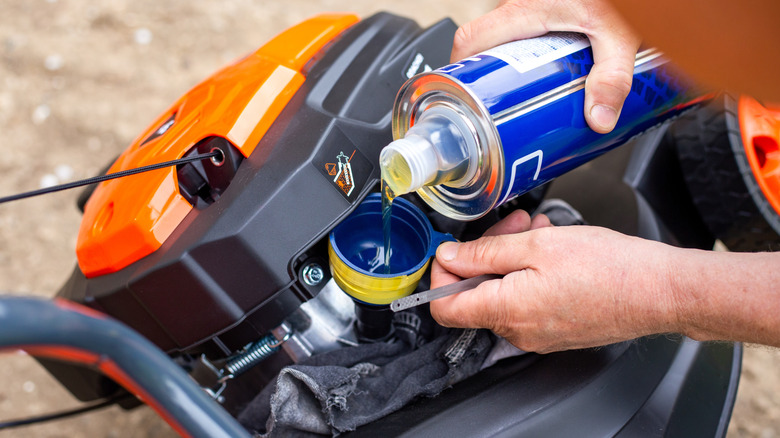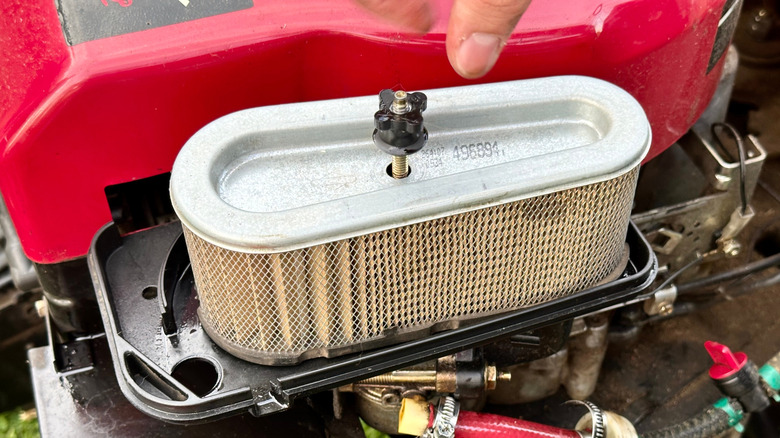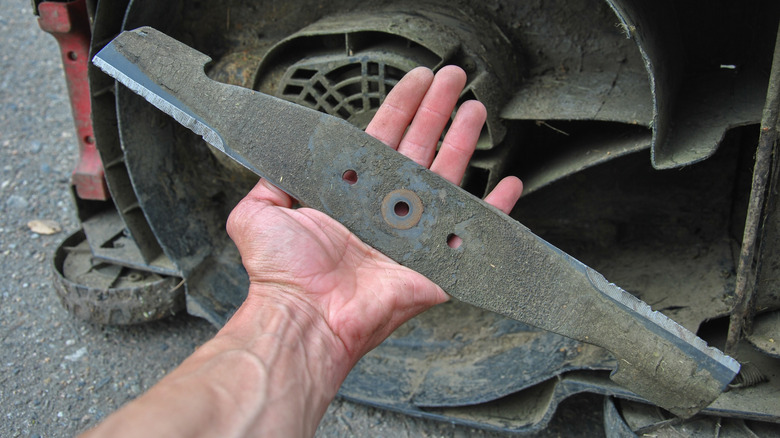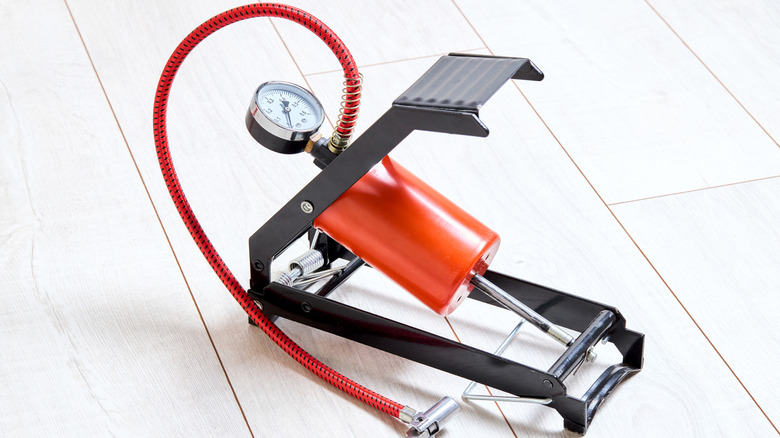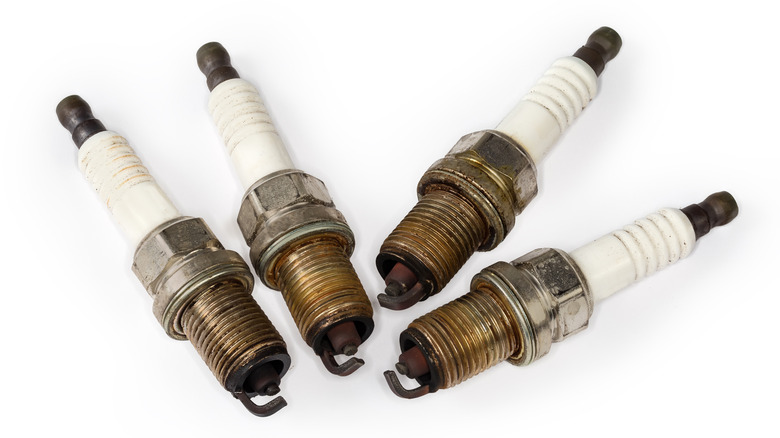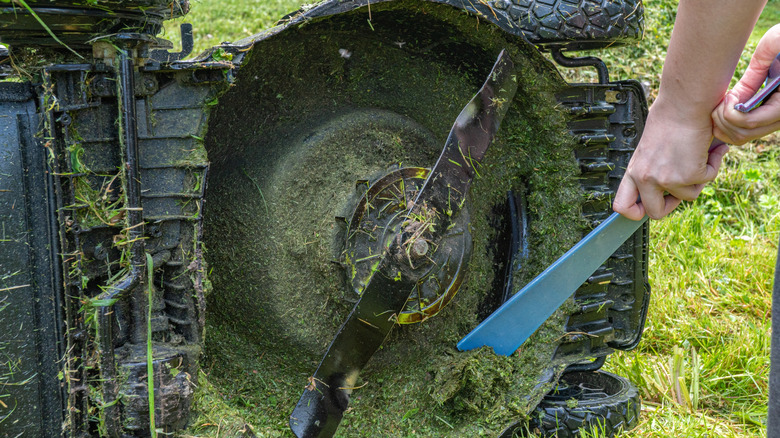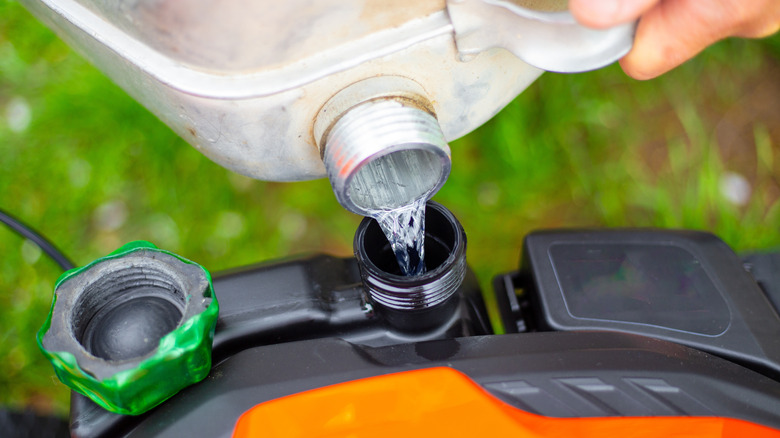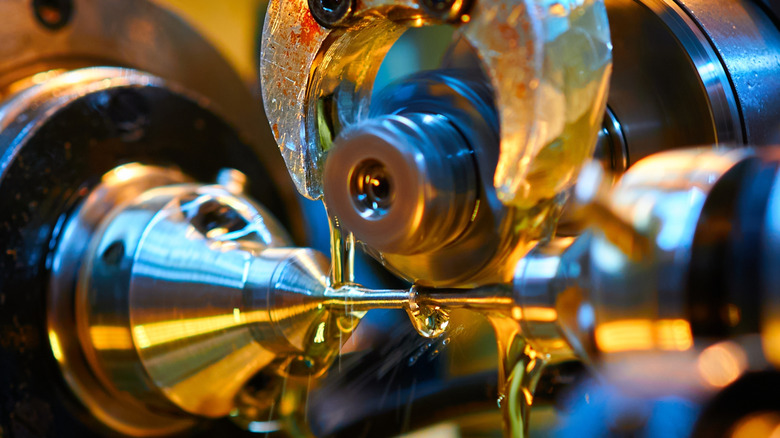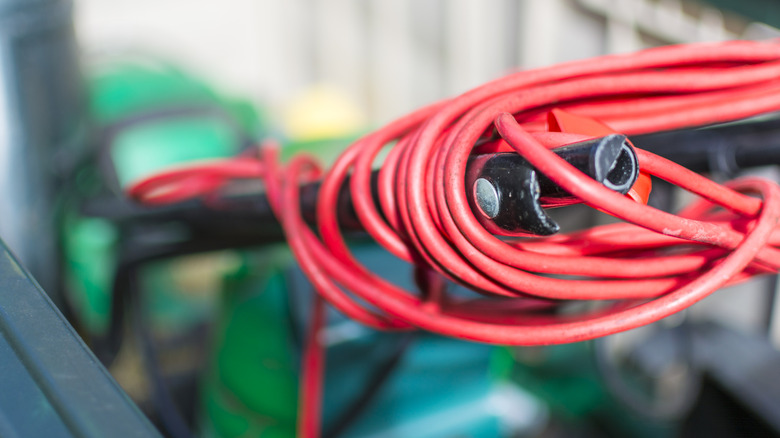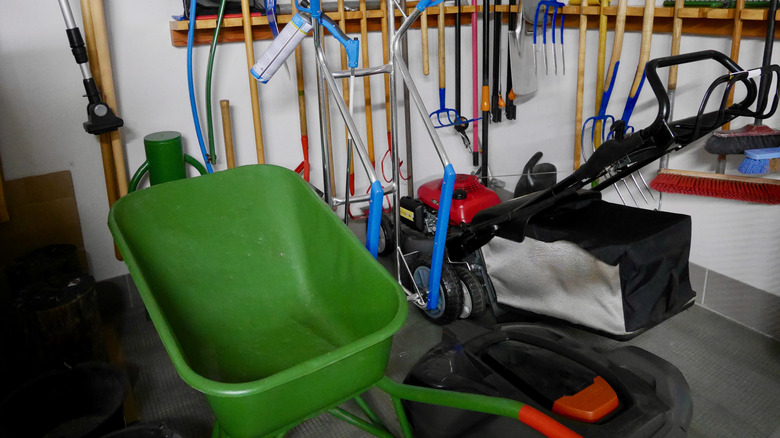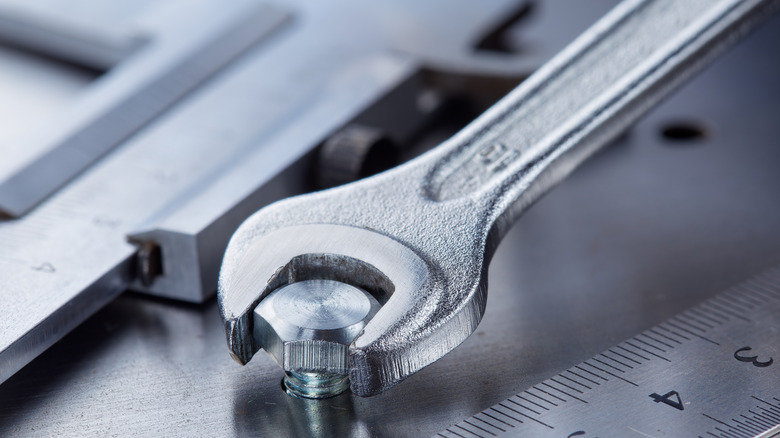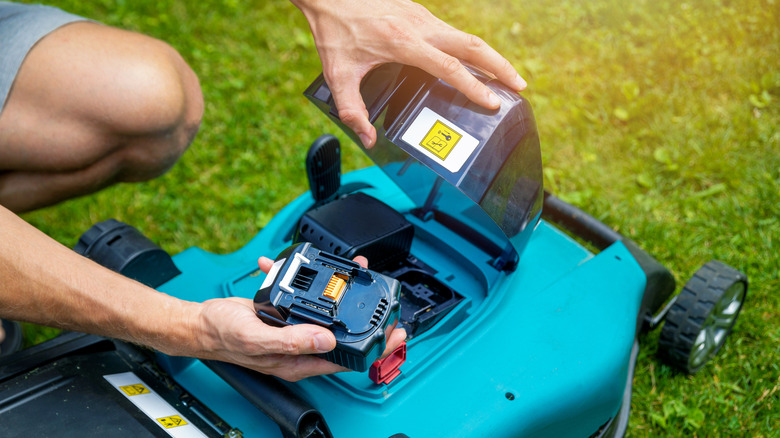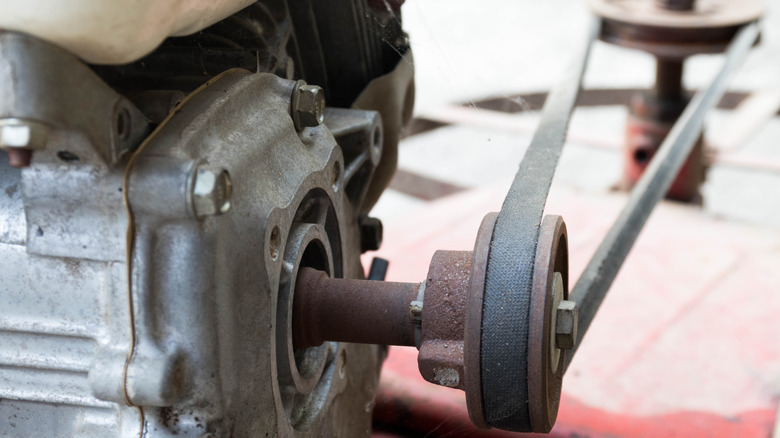13 Tips To Maintain Your Lawn Mower
No matter the brand or model, worst or best, regular maintenance is the key to extending the life of a lawn mower and ensuring it performs throughout the season. Even for some of the most reliable options out there, like the Honda GCV160, a Toro Recycler, or one of the best John Deere riding mowers, upkeep is just as important as the machine itself. Mowers are consistently subject to wear and tear from constant use and the elements. Poor maintenance, use, dirt, grass, and moisture can quickly cause damage if not regularly addressed.
Proper maintenance not only helps your mower run smoothly, it also guarantees more efficient performance, cleaner cuts, and a longer lifespan. Simple tasks like changing the oil, sharpening the blades, cleaning the deck, and inspecting belts might seem redundant, but they are essential in preventing breakdowns and avoiding costly repairs. A well-maintained mower reduces fuel consumption, minimizes engine strain, and ensures that it operates without issues. Not to mention, it almost guarantees a perfectly manicured lawn if you do it right, even with budget-friendly push mowers under $500.
Neglecting maintenance, of course, can and likely will result in poor cutting performance, higher fuel usage, and even engine failure. Without regular attention, even the top mowers can suffer from worn-out parts, clogged filters, and rusted components. Taking the time to properly maintain your mower not only improves its efficiency but also protects your investment, keeping it running smoothly year after year.
Change the oil regularly
Changing the oil in your lawn mower is one of the most essential maintenance tasks you can perform to keep your machine running smoothly. Over time, oil breaks down, becomes contaminated with dirt and debris, and loses its ability to lubricate the engine properly. This leads to increased friction, heat buildup, and ultimately, engine damage. Neglecting to change it regularly can shorten the lifespan of your mower and lead to some pretty costly repairs.
Ideally, you should change the oil every 50 hours of operation or at the start of each mowing season, whichever comes first. Those who live in areas where the climate stays relatively warm all year may have to make more consideration for hours of operation. Either way, keeping it regular helps ensure that your mower's engine operates at peak efficiency, allowing for smoother starts and more reliable performance. Fresh oil also improves fuel efficiency and reduces the likelihood of overheating, especially during longer mowing sessions.
Failing to replace the oil means your mower will have to work harder, leading to poor performance, more strain on the engine, and even premature failure. In the worst-case scenario, you could be facing an engine replacement sooner than expected. So, don't skimp on this simple, cost-effective task.
Clean or replace the air filter
The air filter in your lawn mower is absolutely crucial for keeping dirt, dust, and debris out of the engine, ensuring it runs clean and efficiently. Over time, the filter can become clogged with grass particles, dust, and other debris, restricting airflow and causing your mower's engine to strain. A restricted air filter can result in poor engine performance, reduced power, and even difficulty starting the mower. If left completely unchecked, it could lead to engine damage or a complete breakdown, which is definitely a hassle you'd want to avoid.
Cleaning or replacing the air filter, ideally after every 25 hours of use, keeps the engine running smoothly and maximizes fuel efficiency. A clean filter ensures the engine gets the airflow it needs to combust fuel effectively, promoting smoother starts and more consistent power during operation. If your filter is too clogged to clean, it's best to replace it entirely to maintain the mower's longevity.
It's best to remember that neglecting to clean or replace a dirty air filter can lead to a build-up of grime inside the engine, which accelerates wear and tear. A simple filter swap is a low-cost, high-reward move that will extend the life of your mower.
Sharpen the blades
Sharpening your lawn mower's blades is probably the most effective way to ensure a clean, healthy cut every time you mow, among the tips on this list. Dull blades tear grass rather than slicing it, which can leave a lawn looking ragged and uneven. More importantly, tearing grass weakens it, making it more vulnerable to disease and pests. If you're noticing frayed edges or brown tips on your grass, it's likely time to sharpen your mower blades before it's too late.
Sharpening the blades should happen at least once a season, or more frequently if you're mowing a lot or dealing with thick grass. A sharp blade cuts grass efficiently, reducing the strain on the engine and making mowing easier, especially during thick, overgrown weeds. It also promotes a healthier lawn, as the clean cuts allow the grass to heal faster and better resist the elements.
Those who have mowers with a dull blade can quickly turn a well-kept lawn into a patchy, stressed-out mess. Many people are unaware that mowing requires more effort, resulting in increased fuel consumption and unnecessary engine wear. In extreme cases, a dull blade can even lead to tearing of the mower deck. Sharpening your blades is an easy, affordable way to boost your mower's performance.
Check tire pressure
Proper tire pressure is often overlooked and a mistake almost everyone makes when it comes to lawn mowers, but it plays a critical role in ensuring a smooth and even cut. If your mower's tires are underinflated, the mower can tilt unevenly, causing the blades to cut unevenly as well. This leads to an uneven lawn and, again, unnecessary strain on the engine. Overinflated tires, on the other hand, can cause the mower to bounce and create a bumpy ride, which can also affect the quality of the cut.
Tire pressure affects three things: the mower's handling, fuel efficiency, and cutting precision. Checking the pressure before each mowing session is a fairly quick and easy step that helps ensure optimal performance. Many mowers have specific tire pressure recommendations, usually listed on the sidewall of the tire or in the owner's manual, and it's best to follow those guidelines to avoid any issues.
By maintaining proper tire pressure, you also extend the life of the tires themselves. Tires that are too low can wear out prematurely, especially on uneven ground, which can result in costly replacements. So, don't skip this one; It'll make mowing easier and more efficient.
Inspect and replace spark plugs
Spark plugs are small and mighty components in a lawn mower engine, playing a crucial role in starting and keeping it running smoothly. Over time, spark plugs can accumulate carbon deposits, wear out, or become corroded, leading to hard starts, misfires, and poor performance. Regularly inspecting and replacing spark plugs can prevent a host of bigger problems down the road.
You should inspect your mower's spark plugs at least once a year, according to experts. If you notice visible signs of wear or corrosion, it's time for a replacement. A worn spark plug can make it harder to start your mower and cause the engine to run inefficiently, wasting fuel and increasing strain on the system. A fresh spark plug almost always ensures reliable starts, smooth operation, and better fuel efficiency. It also reduces the likelihood of engine stalling or sputtering during mowing.
Replacing spark plugs is easy and affordable, typically ranging between $3 and $15. Again, neglecting them can only lead down a bad road. Double-checking them is one of the most straightforward ways to keep your engine purring every season.
Clean the deck after use
Cleaning the underside of your lawn mower's deck is arguably one of the most essential parts of maintenance on our list. Grass clippings, dirt, and other debris quickly accumulate beneath the deck during a mowing session, creating a thick, damp buildup that can wreck performance. Over time, the gunk can lead to rust, block air circulation, and cause the blades to become less effective. If you've ever noticed your mower leaving uneven patches or struggling to cut through thicker grass, a dirty deck could be the culprit.
After each mowing session, take the time to clean the deck. It's best to do this while the mower is still warm, as the grass will be softer and easier to remove. You can use a scraper, brush, or even a hose to get rid of clippings. Except, avoid using a power washer, as the high pressure can damage the mower's components. Regular deck cleaning directly helps prevent the shortening of the lifespan of your mower without a doubt.
Skipping it can lead to clogged blades, which means more effort from the engine and a less efficient mowing process. A clean deck will ensure that your mower operates at its peak.
Check the fuel system
It's safe to say the entirety of the fuel system in your lawn mower plays a vital role in its overall performance, and ensuring it is in good shape can save you from the frustrating starts and poor engine performance. Old or stale fuel is one of the most common issues that lead to mower problems, as it can clog the carburetor, fuel lines, and other components, preventing the engine from doing what it's supposed to. To avoid these issues, it's essential to check and maintain the fuel system on a regular basis.
First, always make sure to use fresh, high-quality fuel in your mower. It doesn't need to be premium, but it should still be regular unleaded petrol or E10 at least. If you're storing your mower for the off-season, drain the tank or add a fuel stabilizer to prevent fuel degradation. Leaving old fuel in the tank can cause gumming and varnishing in the carburetor, making it difficult to start the mower when spring rolls around. It's also important to inspect the fuel lines for any cracks, leaks, or signs of wear, as damaged fuel lines can result in fuel leakage, which is not only inefficient but potentially hazardous.
Regularly checking the fuel filter is also vital because a clogged filter can hinder fuel flow overall. Keeping the fuel system in top condition ensures the mower starts easily, runs efficiently, and performs at its best throughout the mowing season. By staying on top of fuel maintenance, you'll avoid frustrating downtime and extend the life of your mower.
Lubricate moving parts
Lubricating the moving parts of your lawn mower might seem like a small detail, but it plays a huge role in ensuring smooth, efficient operation and prolonging its life. From the wheels to the height adjustment lever and the throttle, all the moving components require regular lubrication to reduce friction and prevent wear. Without proper lubrication, parts can grind against each other, leading to premature damage, rust, and even malfunction.
The best time to lubricate your mower's moving parts is during your routine maintenance checks, typically once a season. Apply lubricant to the wheels, axles, and any other moving joints, ensuring that parts like the height adjustment mechanism move smoothly. Don't forget to lubricate the cables and throttle controls, as these are crucial for smooth operation, especially when adjusting settings mid-mow.
Neglecting to lubricate these parts can result in stiff operation, making it harder to maneuver your mower and adjust its settings. Over time, this added strain can cause parts to seize up or break, leading to costly repairs. By taking a few minutes to apply a lubricant suited for outdoor machinery, you'll keep your mower running like new, reduce the risk of rust, and make mowing a much smoother, easier experience.
Inspect cables
The cables in your lawn mower play a crucial role in its overall function, controlling everything from the throttle to the drive mechanism. Over time, these cables can stretch, fray, or even snap, which can lead to issues such as difficulty starting the mower, unresponsive throttle control, or problems with self-propulsion. Regularly inspecting the cables is necessary to prevent these problems from escalating into more significant and costly repairs.
Start by checking the throttle cable to ensure it moves smoothly when you adjust the throttle. A stiff or frayed cable can cause the engine to rev unevenly or make it harder to accelerate. Similarly, check the drive cable, which controls the mower's movement. If you notice any slack or resistance, it could indicate a problem that requires immediate attention.
If any cables are showing signs of wear, it's best to replace them sooner rather than later to avoid breakdowns mid-mowing. The process of replacing mower cables is relatively simple, and most replacement parts are affordable at around $10 to $20, depending on the retailer. Neglecting to inspect and replace damaged cables, however, can lead to poor performance and even an inability to start the mower or drive it forward.
Ensure proper storage during the off-season
Storing a lawn mower properly helps its longevity and ensures it's ready to go when you need it again. Without the right care, prolonged inactivity can lead to rust, fuel degradation, and engine issues that could turn into expensive repairs.
Start by cleaning your mower thoroughly, removing grass clippings, dirt, and debris from the deck and other components. Empty the fuel tank or add a fuel stabilizer to prevent the fuel from breaking down and clogging the carburetor. If you choose to leave fuel in the tank, the stabilizer will help preserve its quality over the off-season. Be sure to change the oil, as old oil can cause corrosion inside the engine. Additionally, inspect the spark plug and either clean it or replace it as needed.
For storage, find a cool, dry place to store your mower, ideally in a shed or garage that's protected from the elements. Keeping it off the ground on a shelf or pallet can also prevent moisture from causing rust. By taking these steps to properly store your mower, you'll ensure it's in excellent shape for the next mowing season.
Tighten loose bolts and nuts
Over time, vibrations from mowing can cause the bolts and nuts on your lawn mower to loosen, potentially leading to mechanical issues or even safety hazards. Regularly checking and tightening these fasteners helps keep your mower operating smoothly and prevents parts from coming loose during use. Loose bolts can cause everything from rattling noises to serious damage, including misalignment of the blades or loss of control over the mower's operation.
Before each mowing season or after every few uses, take a few minutes to inspect your mower for any loose bolts or nuts. Pay particular attention to the blade assembly, wheels, and engine housing, as these areas tend to experience the most stress and movement. Use the appropriate tools to tighten them securely, being careful not to overtighten, which can strip threads or cause parts to crack.
Issues like uneven cuts, reduced mower performance, or even broken components that will require costly repairs can pop up. Additionally, loose bolts can result in your mower parts rattling or vibrating excessively, which can cause undue wear on the engine and drivetrain. Regularly tightening bolts and nuts will ensure your mower stays secure, runs smoothly, and avoids potential breakdowns.
Replace the battery
If you have an electric lawn mower, the battery is, of course, the heart of its performance. Over time, batteries lose their ability to hold a charge. As with a car, it reduces a mower's run time and efficiency. Replacing the battery when it starts to show signs of wear is essential for maintaining optimal performance. A weak or dead battery not only affects your mower's ability to start but also puts additional strain on the motor, leading to faster wear and tear on other components.
The first sign that your mower's battery may need replacing is a noticeable decrease in runtime or difficulty starting the mower. If your mower takes longer than usual to start or dies quickly during use, it's time to inspect the battery. Most mower batteries last between two and three years, depending on usage, but it's important to check the manufacturer's recommendations for your specific model.
Replacing the battery is generally straightforward and relatively affordable, but continuing to use a worn-out battery can result in poor performance and could even damage the mower's electrical system. Additionally, overcharging a battery or leaving it plugged in for too long can shorten its lifespan, so be sure to follow proper charging practices.
Inspect the blade belt
The blade belt in your lawn mower is a crucial component that connects the engine to the blades, allowing them to spin and cut grass effectively, which means it really needs to be checked. Over time, the belt can become worn, stretched, or even frayed, which can lead to poor cutting performance, increased strain on the engine, or failure of the mower's blades. Regularly inspecting and maintaining the blade belt is key to preventing unexpected breakdowns and ensuring your mower operates efficiently.
Start by checking the blade belt for any visible signs of wear, such as cracks, fraying, or stretching. A stretched or damaged belt will not rotate the blades as efficiently, leading to a less powerful cut and putting unnecessary strain on the mower's engine. If you notice any damage, it's important to replace the belt promptly to avoid further damage. Most lawn mowers have an accessible area where you can easily inspect the belt, making this an easy and quick task.
Neglecting the blade belt can lead to more significant issues, such as the belt snapping during use or the blades failing to engage altogether. Replacing a worn belt is much more cost-effective and less hassle than dealing with the consequences of a snapped belt in the middle of mowing. By regularly inspecting the blade belt, you'll ensure a smoother, more efficient mowing experience and extend the life of your mower.

